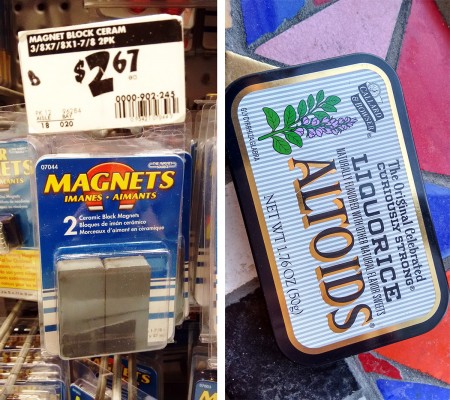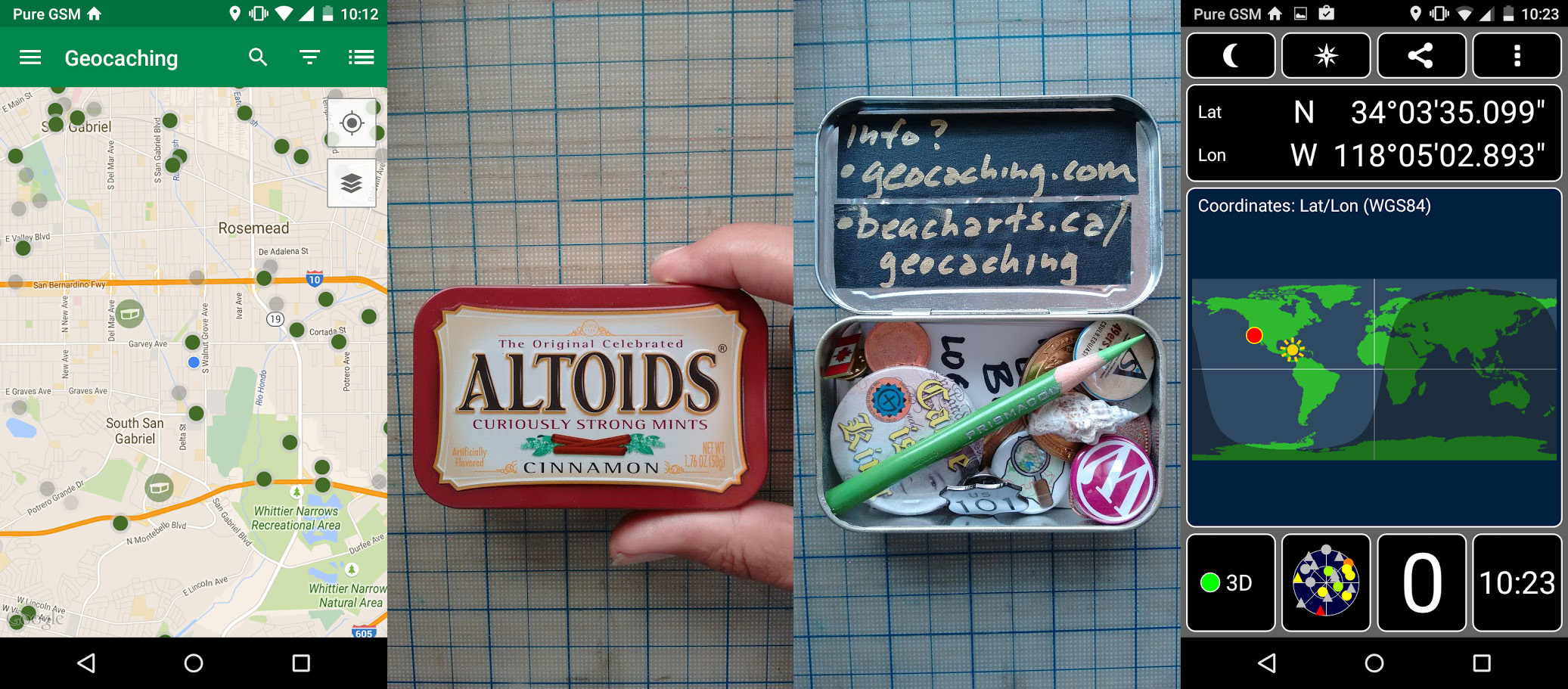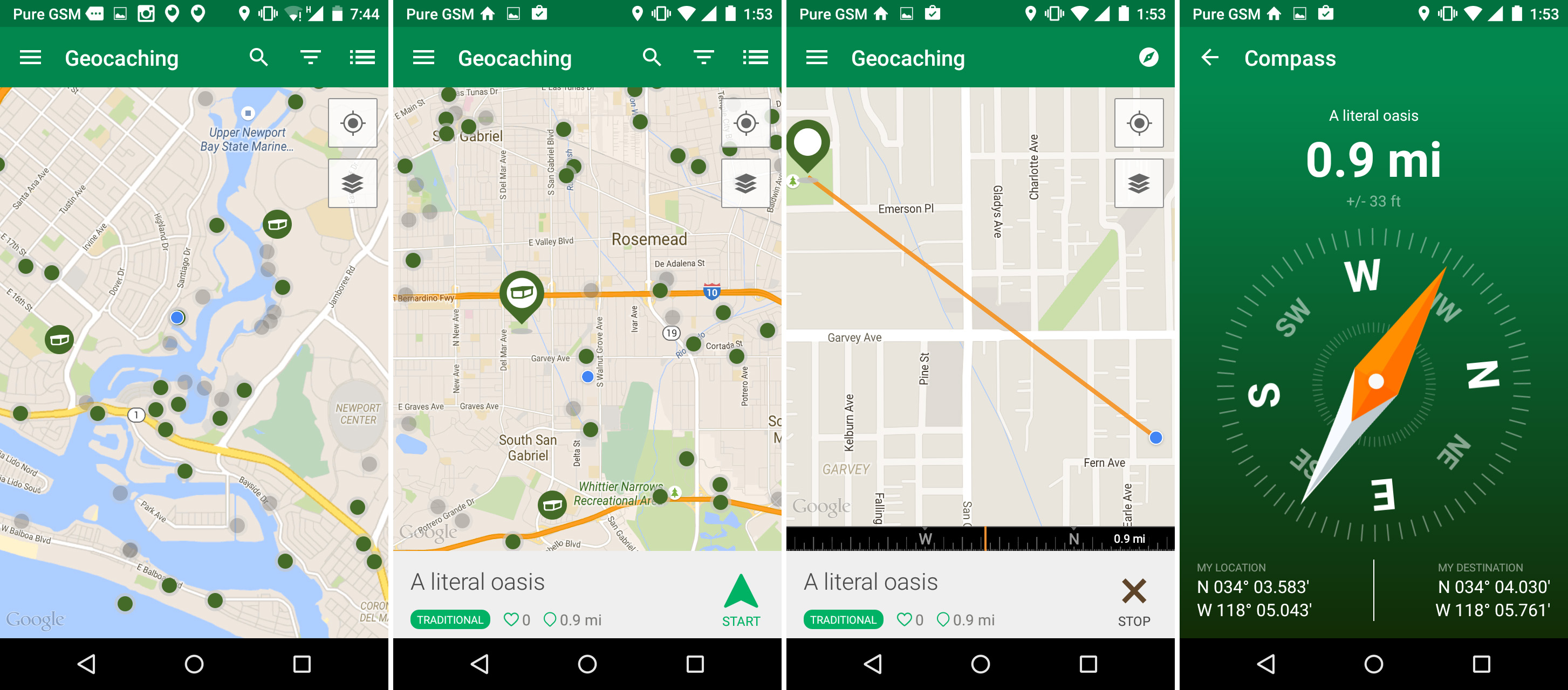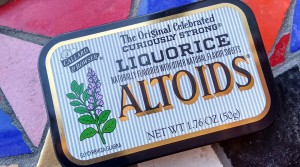
Location Based Gaming
Most Video Games, Virtual Worlds, and MMORPGs take place in cyberspace. The world of Grand Theft Auto or World of Warcraft exists entirely in your computer or game console. Whether you play in Los Angeles, Sao Paulo, or Taipei doesn’t matter very much. But what if there was a game that had “virtual clues” placed in the real streets of Berlin? That would mean a much smaller audience for the game of course, but it’d also mean that your “virtual experience” was mapped to elements of the real world. It would mean that your game was “Location Based.”
Augmented Reality
As you know, we still spend a lot of time in plain, old “regular reality” or “RL.” Some people spend a little or a lot of time in Virtual Reality, or “VR.” But there’s also a hybrid space known as Augmented Reality or “AR.” This doesn’t have to be too fancy, it can be something as simple as standing in the street and holding your phone up, and then having Yelp Ratings superimposed on the restaurants down the length of the street. No doubt in the near future plumbers, copier repair peeps (do we actually still need copiers & printers?) and others will have AR Tablets they can hold up and receive directions to change this pipe or flip that lever. The old Museum Audio Tour might be replaced by a much more graphic and immersive tour where you can hold your phone or tablet up and see annotations about an object, or see x-rays of it, and so on.
For Location Based Gaming your phone might reveal “clues” planted along the Alexanderplatz, or have text or videos mapped onto the Brandenburg Gate. Perhaps a character, RL or Avatar, will speak to you from a specific location. You can do some pretty amazing things with platforms like Layar.
Geocaching
Don’t worry, you don’t have to start programming AR Layers! For our “peek” at LBGs & ARGs, we’re going to try something a little easier, Geocaching. This is a “game” where you can hide something somewhere on earth, upload the coordinates, and let other people hunt for it. And you can find other people’s Geocaches. In more remote areas like Mammoth or Sequoia, Geocaches can be large containers like old ammo canisters filled with trinkets to trade. Down here in the city a more common form is something like an Altoids tin and a magnet hiding it in some small place.
You can see a couple of Glenn’s geocaches here: beacharts.ca/glenns-geocaches

Your Activity
Part 1. Finding a Cache
- Download the Geocaching App for Android or iOS (the Free version!)
- Find a cache near you that looks interesting
- Go find it!
- Enter your cache in the paper log book & with the mobile app
- Trade trinkets
- Take a photo
Part 2. Placing a Cache
- Get an Altoids tin and a magnet. You can eat all the mints. Preferably not all at once.
- Get a tiny pencil and some paper for a “log book” that will fit in your tin
- Find a few “trinkets” – buttons, coins, whatever, that you can stock your tin with
- Find a place to hide your cache. Note 1: The Geocaching website requires your cache to be 500 feet away from the nearest existing cache. For example, there’s already one at The Pyramid and the diagonal of The Pyramid is only 460 or so feet, so you can’t hide a 2nd one there. Note 2: GPS coordinates can drift a bit. Try to find a clear spot to take your reading and wait a while for the numbers to settle down. Of course you might not want to hide your cache in a clear spot! If your spot is under a rock, no problem. But if it’s under a tree or building, you might take clear readings on either side of it and then average the coordinates. Also, when you post your cache on the website you can say “these coordinates take you to a point 20′ north of the cache location” if necessary. And you can add a “hint” to your post that can help people zero in on it.
- Take a photo
- Enter your cache at Geocaching.com
- Once your cache goes live on Geocaching.com, then add the URL of your page in the comments here, so classmates can go find them! (next week… for Extra Credit!)

1. Some Geocaches near me, using the Geocaching (free) app. 2. Outside of my Altoids Tin. 3. Inside of my Altoids tin. 4. I’m not sure if the Geocaching phone app can also *place* geocaches, if not, just grab any mobile app that will show you the GPS coordinates of where you are, then place your cache, then input coordinates with your laptop on the geocaching website. The screen cap here is from a cool, free GPS app for Android I found called “GPS Test“

I haven’t found a way to log your new cache with the mobile app – seems like you still have to go to the website with your laptop – but I did find a way to get the coordinates of your location from the Geocaching App:
1. Go to the app and look at the caches around you. Click on any one. 2. Then in the lower right click “Start”. 3. Then in the upper-right click the tiny compass on the green stripe. 4. In the lower-right you’ll find the coordinates for the cache you’re theoretically trying to find, AND in the lower-left it’ll give you the coordinates for where you’re standing right now. Stand right where you’re hiding your cache, and this will read your cache coordinates. Be sure not to mix it up with the one you clicked to find!
Your Blog Post
- Include pix of the cache you found and the cache you placed
- List the URL of your Cache Page on Geocaching.com
- Describe your 2 experiences: easy, hard, fun? Did it make you think any differently about places and the different experiences and ideas that are “mapped” onto the places we inhabit?




http://www.geocaching.com/geocache/GC65ZGY_pipeline
http://www.geocaching.com/geocache/GC65ZKZ_wintergreen-altoids
Can I get a little more description? … Is it being the Foundation Building and what is it hidden in or under ?
The cache is outside of the Foundation Building. Once you are here, go to the back of the building where the parking spaces are and start your search from there. I hid the cache on the base of an ELONGATED YELLOW object/figure. Use the picture I posted on my link above to help you find it. Hope this helps. 😉
I think someone took it
I will take a look soon at my hiding spot. Thank you for letting me know.
https://www.geocaching.com/seek/cache_details.aspx?wp=GC65ZGC&title=brick-garden&guid=58dc9944-f4fb-4262-b137-11629ed3372b
https://www.geocaching.com/seek/cache_details.aspx?wp=GC662MT&title=nebraska
https://www.geocaching.com/seek/cache_details.aspx?wp=GC664B1&title=in-a-plant&guid=460f4e8c-dad8-455e-b1e0-5a9af1ca6030
https://www.geocaching.com/seek/cache_details.aspx?wp=GC665Z0&title=wesley&guid=b129160b-d1a9-42d6-ae2f-d28db7c4219c
https://www.geocaching.com/seek/cache_details.aspx?wp=GC662GK&title=fire-hydrant&guid=2dcd8dec-dd06-4559-b298-9b3771273b22
https://www.geocaching.com/seek/cache_details.aspx?wp=GC666JT&title=treasure-in-benches&guid=ee80c33e-8a03-4b87-baad-40150f3f73f8
https://www.geocaching.com/seek/cache_details.aspx?wp=GC666B5&title=miniature-house&guid=c5c51753-393c-45ef-bd7d-b4366803b993
https://www.geocaching.com/seek/cache_details.aspx?wp=GC666KR&title=menta
https://www.geocaching.com/seek/cache_details.aspx?wp=GC666QG&title=its-sprinkling
This cache has been disabeled by geocaching.com, as it is in private property, and need to me moved to a public location.
Glad you all tried the game, but shame on you and your instructor for not reading the rules and guidelines, on the website.
Coordinates are the important part of the game, and take some practice and knowledge, so just hiding a cache with out experience is causing havac with thise that make caching a main hobby. Hope you will learn more about our hobby, game, sport.
Hi Everyone! Thank you for your all of your Geocache listings! We’re going to use them for EC this week… SO… many of your listings above are good to go and have already been found be several “outside peeps” (not Art110 peeps, but just “normal” Geocaching.com users)
Also some of your listings above have not yet been approved by the Geocaching website. This is probably because there were issues with your post that they asked you to fix. If your Cache isn’t “officially published” yet, I’m going to delete your comment at this time, only to avoid confusing the class with caches that can’t actually be found. You’re welcome to re-list your cache here if/when it goes live on the Geocaching.com website.
Thanks everyone!!
https://www.geocaching.com/seek/cache_details.aspx?wp=GC666PQ&title=take-a-break
https://www.geocaching.com/seek/cache_details.aspx?wp=GC663P2&title=somewhere-in-greenbelt-d&guid=57d31b7a-2ad8-40d1-aaa5-d7f23888ee4a
Just ignore this one cache got disabled because my phone wouldn’t get the right coordinates
https://www.geocaching.com/seek/cache_details.aspx?wp=GC6618J&title=csulb-altoids-container
https://www.geocaching.com/seek/cache_details.aspx?wp=GC662DF&title=long-beach-computer-science-building&guid=1a6caae0-32ae-4ff7-8a6d-358f2c37ff41